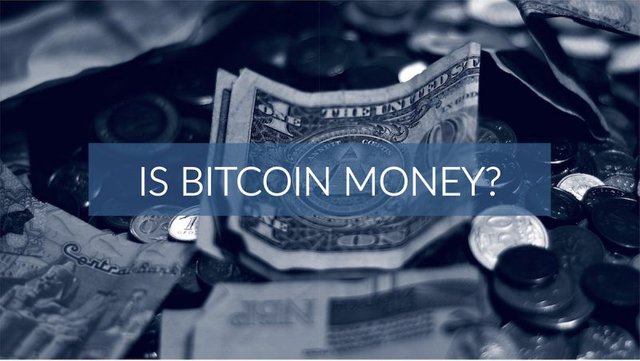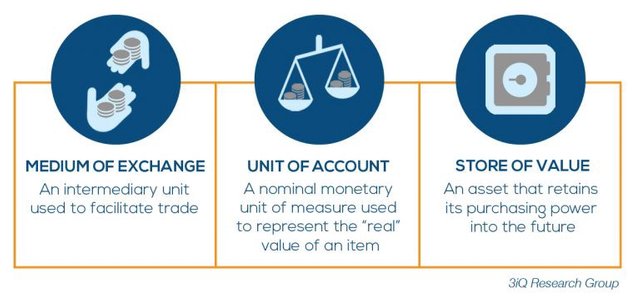Why Bitcoin is the Purest Form of Money to Date. A History of Money
History of Money
We all use money and spend significant portions of our lives working for it, but what is it? Money in its simplest form is a medium of exchange, unit of account, and store of value. Money developed as a result of the difficulties and inefficiencies of tracking debts. For example, if a hunter made a large catch 25,000 years ago, they may have wanted to share the spoils with their community in return for future favours. However, before money came into existence this was a difficult proposition; the hunter would have to keep track of exactly how much meat they gave away and to which people they gave it to. Because there was no shared ledger, every person was responsible for keeping track of their own debts
Self tracking of debts had obvious issues such as inaccurarate and conflicting records as well as a lack of consensus on the value of different goods. Thus, the birth of commodity money, first in the form of collectables such as shells and pelts and later precious metals like gold and silver. This early form of money provided an intermediary good which could be used as a shared ledger, everyone agreed upon the value of one unit. Commodity money was chosen based on certain characteristics such as portability, durability and storability. Collectables and precious metals were a vast improvement over the methods used previously in debt economies, but portability and divisibility were further improved with the introduction of representative money
Representative money is a medium of exchange that proves ownership of something of value but does not have intrinsic value in itself. Representative money first came in the form of gold and silver deposit receipts, issued by merchants, and later by government issued bank notes. For centuries bank notes were backed by gold, meaning at any point one could exchange their bank notes for gold at a specified rate. As economies grew and demanded more and more currency, the supply of gold was not great enough to supply the backing of new bank notes. Fiat money, the most common form of money used today, was developed so that governments could better control the money supply. Fiat money functions the same as earlier bank notes but is not backed by any physical commodity, rather the value is based on people’s shared perception.
Bitcoin and Money
Now that we have an understanding of what money is and where it came from, let’s talk about how bitcoin and other cryptocurrencies fit into all of this. According to The Economics of Money, Banking, and Financial Markets by Mishkin (2007), there are 3 functions something must fulfill in order to be considered money:
Bitcoin fulfills all three of these functions: it is easy to trade, it can be used to represent the value of real items, and it is a very secure store of value
.Not all types of money are created equal however, just because something fulfills all three of these functions does not necessarily mean it is a good form of money. Certain properties make some forms of money better for certain uses. The chart below compares different types of money, including bitcoin, based on seven widely used monetary properties.
Courtesy of 3iQ Research Group
Intrinsic Value Bitcoin’s intrinsic values lies in its network. It is able to act as the world’s first digital bearer asset, which can be stored and transacted without interference from a third-party custodian or government. In addition, there is value in the fact these transactions can take place across unlimited distance at near-instant speed.
Portability A bitcoin is not a physical items we hold like gold or cash, they weigh nothing and are frictionless to transport. You can store bitcoin on your phone, computer or even a small hardware wallet. The only requirement to transporting bitcoin is electricity and an internet connection, both of which are becoming nearly ubiquitous. In addition, bitcoin do not become any more difficult to transport as you accumulate more. Purchasing big ticket items like a house or car can be as easy as buying a cup of coffee.
Scarcity Money must have a limited supply in order to maintain its value. There will only ever be a maximum of 21 million bitcoins in circulation, no person can ever create more. Unlike inflationary currencies such as fiat which become less valuable as the supply increases, bitcoin can be considered deflationary because as the supply decreases (due to loss, theft, etc.) each bitcoin will constitute a larger percentage of the total supply and therefore be worth more.
Recognisability The ability to quickly and reliably test whether money you are receiving is in fact real and not counterfeit is crucial. The nature of Bitcoin’s shared ledger makes counterfeit virtually impossible. Every transaction and address has a completely unique identifier which is public and can be quickly verified.
Fungibility Fungibility tests whether one unit of money is identical to any other unit. In most cases, bitcoin is considered to be very fungible. One bitcoin is worth the same as any other bitcoin and they can be considered completely interchangeable. However, in rare cases problems may arise due to the traceability of transactions on the Bitcoin network. If bitcoin come into contact with a wallet address that is associated with unfavourable services, it may be considered ‘dirty’ bitcoin. Some buyers avoid ‘dirty’ bitcoin, which causes these coins to be worth less compared to ‘clean’ or ‘virgin’ (newly minted) bitcoin.
Durability A bitcoin is virtually indestructible, it does not succumb to wear and tear and it cannot be purposefully destroyed. Although, bitcoin can effectively be lost by being sent to an address that no one is able to withdraw from. None the less, following proper backup procedure, bitcoin is amongst the safest stores of wealth.
So is bitcoin real money? The short answer is yes. The long answer is that it is not only one of the purest forms of money to date, it is far more than just money. Alongside its exceptional monetary properties Bitcoin is a protocol, computer network, and more. Providing flexibility and function that no existing form of money can offer.



Hi! I am a robot. I just upvoted you! I found similar content that readers might be interested in:
https://hackernoon.com/why-bitcoin-is-the-purest-form-of-money-to-date-a-history-of-money-2c6613f7bcfc